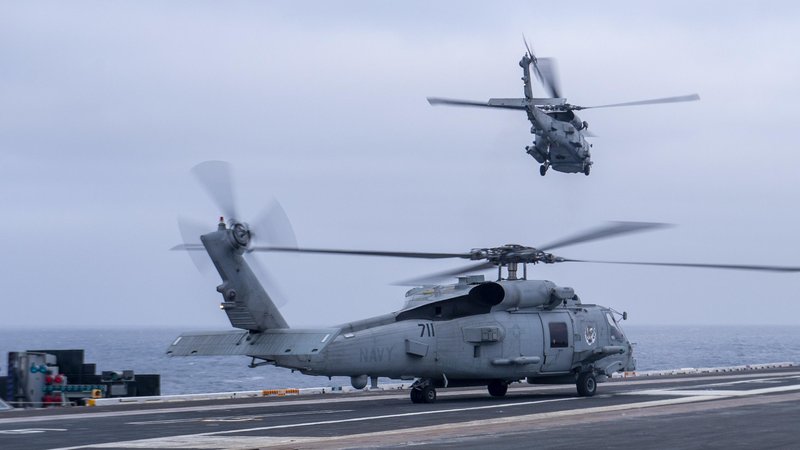Replacing the MH-60 – why the US Navy is proceeding with caution
The US Army has dramatically dominated the headlines recently when it comes to major helicopter programmes. This is something that the USN appears to have recognised, commenting that its Cost Assessment and Program Evaluation (CAPE) office is digesting a report on potential alternatives for the large MH-60 fleet, but that any new platform is unlikely to be seen before 2030.
This timeline is several years behind the army equivalent, but for now the navy appears unconcerned. The shipboard MH-60 derivative of the ubiquitous S-70 series has progressed to the R and S models, of which sufficient reserves exist to replace short-term losses or retirements, and the production line remains very much open... Continues below
Newsletter Sponsor:

Above: The USN appears to be in no hurry to decide on a replacement for the MH-60. (Photo: USN)
Given the embarrassment of returning C-2 Greyhounds to service as logistics aircraft while the CV-22 suffered yet another bout of misfortune, holding back on any commitment to a new design is an understandable reaction. Concurrent is the introduction of the excitingly named TH-73 Thrasher training helicopter, the looming question of T-45 Goshawk replacement and continued uncertainty over what exactly is to be done with the Super Hornets. versus the F-35C.
Given these myriad programmes, one of question has to be as to whether the navy really needs a new multi-role helicopter design. Longer range, higher speed, more power, improved systems etc are all welcome, but are they worth the cost?
The army had identified improved ground-based air defence as a driving force behind its new vertical lift approach, before abruptly backtracking – or arguably reinforcing this concern – by cancelling its new FARA reconnaissance platform.

The navy uses its MH-60s as logistics and ASW/ASuW aircraft and onboard operations limit aircraft size and/or design choices. So if it works, does it need short-term replacement?
The US Army FVL candidates are generally regarded as too large for naval use. Fortunately for the navy, there are a range of mid-sized, marinised candidates. An AW101 is probably too big, the KAI Surion family is possibly about right as is the AW149. The NH90 is on the large side and has a chequered track record, with some operators rejecting deliveries and retiring fleets early, with the MH-60 ordered as a replacement… A brand new design is arguably a headache that the service does not need.
All of the above examples can undertake ASW, AsuW, attack and search and rescue. They offer certain advantages over the MH-60, but nothing close to a generational advance. It is generally held that the submarine threat will persist and the spread of remote underwater and surface combatants is deepening the problem.
This would suggest that the formula of speed versus range or persistence plus systems and weapons has not essentially changed. By comparison, a low RCS and advanced EW capability is not quite as core, although management of loyal rotary UAV wingmen will undoubtedly creep in.
As of mid-2024 there is little to go on. Mutterings concerning the CV-22 are to a degree overblown, but an overly complex design adopted from a different service is yet another debunking of the ‘one size fits all’ argument. Local production and IP ownership is a basic US requirement.
But in terms of low risk, a domestic variant of a proven allied maritime platform is by no means an illogical choice and might leave more spare cash for competing projects. So far there have been no great issues with the Thrasher while the T-45 has provided mainly sterling service. ‘Good enough’ is a strong candidate as the deciding principle for an MH-60 replacement. Another option, of course, is just to buy new Seahawks as older ones are phased out…
Other articles in this newsletter:
Can Russian industry sustain a viable air arm?
Can Eurodrone prosper in a crowded market?
Don't want to miss out on future Decisive Edge content? Make sure you are signed up to our email newsletters.











